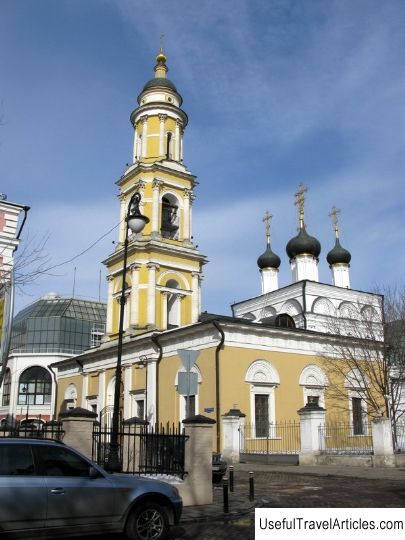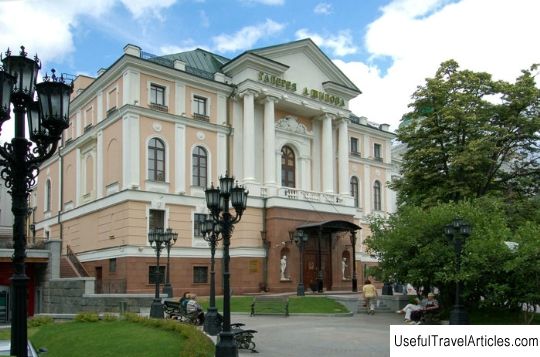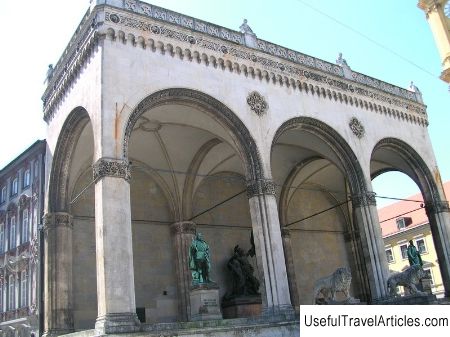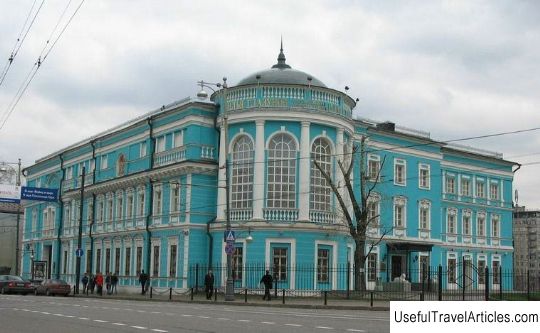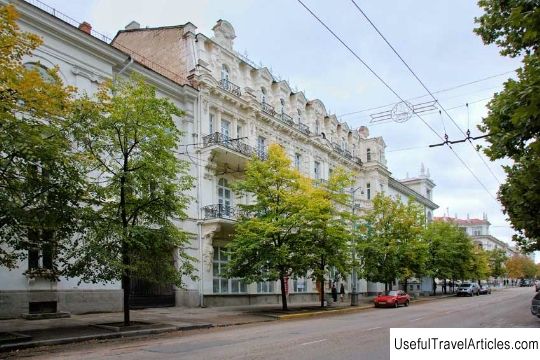Tretyakov Gallery description and photos - Russia - Moscow: Moscow
Rating: 7,8/10 (2544 votes) 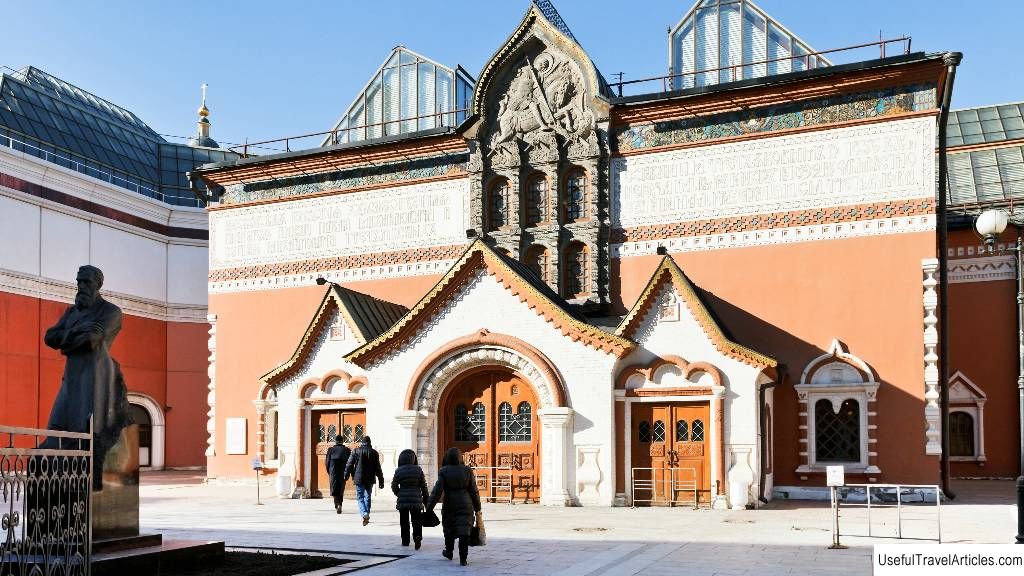
Tretyakov Gallery description and photos - Russia - Moscow: Moscow. Detailed information about the attraction. Description, photos and a map showing the nearest significant objects. Photo and descriptionIn the list of famous art museums in the world, the State Tretyakov Gallery occupies one of the highest places. Today, her collection includes more than 180 thousand exhibits, including paintings, sculptures and jewelry. The exhibited masterpieces were created in a historical period dating back to the 11th-20th centuries. The building where the main collection is located was built in 1906, and today it is included in the register of objects of cultural heritage of the Russian Federation. More than one and a half million people visit the museum annually. History of the gallery May 22, 1856 philanthropist and successful industrialist Pavel Tretyakov bought a painting by Vasily Khudyakov "Clash with Finnish smugglers." This day is considered the date of the foundation of the museum, which Tretyakov and his brother had been planning to create for a long time. He dreamed of presenting to people the works of Russian artists. Soon, the collection was replenished with paintings "Religious Procession at Easter" by V. Perov, "Peter I interrogates Tsarevich Alexei Petrovich in Peterhof" by N. Ge and many others. The collection grew and multiplied, and Tretyakov decided to show the paintings to the audience. In 1867 he opened the first gallery in his own estate in Lavrushinsky Lane . At that time, the collection included 1276 paintings, almost five hundred drawings, a small collection of sculptures and several dozen works by foreign artists. Tretyakov supported many little-known masters and, thanks to his patronage, Vasnetsov and Makovsky became famous. By acquiring paintings that were disagreeable to the authorities, the founder of the gallery inspired the painters to freedom of thought and courage in relation to censors. The Tretyakov Gallery became the National Museum at the end of the 19th century, and from that moment anyone could visit it and absolutely free. In 1892, after the death of his brother, Pavel Tretyakov donated the collection to the city. This is how an art gallery appears in Moscow, which eventually becomes one of the largest collections of works of art on the planet. When the Tretyakovs just started collecting paintings, their collection was housed in the rooms of the mansion where the brothers lived. But in 1860 they decided to build a separate building to store the collection, which by that time had grown into a solid art collection. The two-storey extension to the Tretyakov mansion received a separate entrance for visitors, and the paintings - two spacious halls. New paintings continued to arrive, and the gallery expanded and completed. After the death of the owners, the mansion was reconstructed, and at the beginning of the 20th century it was merged with the gallery halls. The facade in the form of an old tower was designed by the artist Vasnetsov. The Tretyakov Gallery's Golden Fund You will see the oldest exhibits of the museum in the collection of icon painting of the XII-XVII centuries. For example, the image of the Vladimir Icon of the Mother of God , brought at the beginning of the 12th century from Constantinople. After the persecution of the Russian Orthodox Church during the formation of Soviet power, the icon ended up in the museum. Rublevskaya "Trinity" is another world famous masterpiece of Russian icon painting. The author created it in memory of Sergei of Radonezh in the first third of the 15th century. Master Dionysius is no less famous icon painter, and his work "Alexei Metropolitan", written at the end of the 15th century, is also on the list of the most valuable exhibits in the Tretyakov Gallery. Unknown masters of the Mikhailovsky Golden-Domed Monastery at the beginning of the XII century made a mosaic depicting St. Dmitry of Thessaloniki . They used matte colored stones and gold smalt in their work. The work is exhibited in the department of Russian icon painting. Among the many paintings of the State Tretyakov Gallery, the most famous paintings are usually awarded the special attention of visitors. The 18th century is represented by the works of Dmitry Levitsky, Vladimir Borovikovsky and Fyodor Rokotov . The most famous works of this era are portraits of Gabriel Golovkin , a former associate of Peter I, and Empress Elizabeth Petrovna. The first was written by Ivan Nikitin, and the queen was painted by Georg Groot. The 19th century that replaced the world of new artists represented in the museum especially widely: - Outstanding masterpiece I. Kramskoy "Stranger" depicts a young woman who is driving in an open carriage along Nevsky Prospect. Neither the artist's letters nor his diaries contain even a hint of the model's personality, and her name remains a mystery for all time. - "Princess Tarakanova" by Konstantin Flavitsky depicts the death of an adventurer posing as the daughter of Empress Elizabeth Petrovna and sister of Pugachev. After being exposed, the woman was thrown into the casemates of the Peter and Paul Fortress, where, as legend says, she died from a flood. The painting was painted by Flavitsky in 1864. The critic Stasov called her “the most brilliant creation of Russian painting.” - Another amazingly beautiful female portrait exhibited at the Tretyakov Gallery is “Girl with Peaches” . The painting shows the daughter of Savva Mamontov, but attracts viewers to the canvas V. Serov is completely different. The work is permeated with amazing light and is filled with freshness that does not disappear over time. - The work of A. Savrasov "The Rooks Have Arrived" . Critics consider the painting an important stage in the development of landscape painting in Russia. Despite the simplicity of the plot, the picture seems especially close to the heart of any Russian person. - Moonlit Night on Capri depicts the seascape of the Gulf of Naples. Its author is the famous Russian marine painter I. Aivazovsky , a painter of the Main Naval Staff and the author of amazing works dedicated to the sea. - There is an opinion that "Hunters at Rest" were written by V. Perov based on the stories of I. Turgenev. The subject composition, presented by the author to the viewer, depicts three landowners who stopped to rest after a successful hunt. Perov managed to portray the characters and their surroundings so vividly, that the viewer becomes an unwitting participant in the conversation of the hunters. - "Unequal marriage" V. Pukirev , as his contemporaries argued, was written by the artist at a time of his own torment: Pukirev's beloved girl was married by calculation. The picture is made with great love, and the moods of the characters are masterfully conveyed. You can also see the artist's self-portrait on the canvas - he is standing behind the bride, arms crossed over his chest. Three more famous canvases of the XIX century. in the Tretyakov Gallery, enthusiastic spectators are invariably gathered around them: - The painting "Ivan the Terrible and his son Ivan on November 16, 1581" by Ilya Repin is better known to the public under the name "Ivan the Terrible kills his son ". The artist depicts the moment that came a couple of seconds after the fatal blow that the Tsar inflicted on Tsarevich Ivan. The tyrant distraught with grief and the failed heir accepting his fate with meekness are painted so skillfully that the picture still evokes the brightest feelings and emotions in the audience. - "The Appearance of Christ to the People" A. Ivanov wrote about 20 years. During his work, he created several hundred sketches and called the plot of his canvas "worldwide". Ivanov believed that he was depicting a moment in time that played a decisive role in the fate of all mankind. The huge canvas is exhibited in a separate room, built for him in the 30s of the last century. - Vasnetsov's “heroes” depict three heroes of Russian epics on mighty horses in military armor. They inspect the surroundings and with all their appearance demonstrate their readiness to defend the Russian land from enemies. According to the author, he strove “to indicate the continuity of the heroic past of the Russian people with its great future.” The 20th century is represented by the works of Petrov-Vodkin, Benois, Krymov, Chagall, Konchalovsky, Korovin, as well as sculptures by Vera Mukhina. Authors of the Soviet period, whose paintings were honored to take their place on the walls of the Tretyakov Gallery - Isaac Brodsky, the Kukryniksy team, Tatyana Yablonskaya, Evgeny Vuchetich and many others. Branches of the Tretyakov Gallery The main building of the gallery is located at Lavrushinsky lane, 10 . He presents the museum's permanent exhibition and periodically introduces visitors to temporary exhibitions. Recently, the Engineering Corps was added to the main building, where collections of regional museums are presented to residents and guests of the capital. In addition, the Tretyakov Gallery has several branches: - The New Tretyakov Gallery on Krymsky Val was built near the birthplace of P. Tretyakov, who founded the museum. The branch displays works in a modern style, written in the XX-XI centuries. - The Church-Museum of St. Nicholas in Tolmachi exhibits church art objects. - The building House-Museum of Viktor Vasnetsov was built in the neo-Russian style, where it is planned to open a center for decorative creativity. - Paintings and drawings are presented in the A.M. Vasnetsov Memorial Museum-Apartment , where the historian and painter lived at the beginning of the last century. - Museum-workshop of A.S. Golubkina acquaints visitors with the sculptural works of the master and collections of stones. - The work of the Soviet artist P. Kokorin , who bequeathed a collection of his works to the Tretyakov Gallery, is presented in the house-museum named after him. In this branch of the gallery you can see Kokorin's antique furniture and icon-painting. The Tretyakov Gallery offers audioguides in all major languages. You can download a free guide on the gallery's website.         We also recommend reading Tasmanian Museum and Art Gallery description and photos - Australia: Hobart (Tasmania) Topic: Tretyakov Gallery description and photos - Russia - Moscow: Moscow. |
